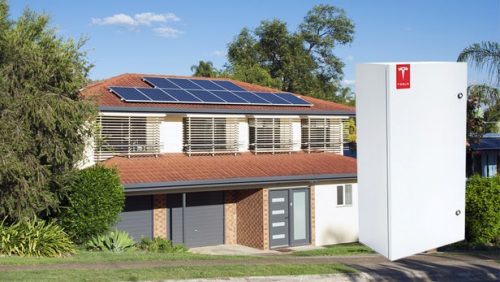
NEM credits paired with energy storage: a solution
The Clean Coalition is pleased with the CPUC’s application of a new methodology that promotes efficient use of the grid, a decrease in fossil fuel consumption, and a healthier, cleaner environment.
 The Clean Coalition policy team achieved a win in April for our support of a net energy metering (NEM) bill credit valuation methodology for solar systems paired with energy storage. After filingcommentsandreply commentson the proposed decision, the California Public Utilities Commission (CPUC) ultimately adopted a monthly estimation methodology because it allows for more flexibility and provides the greatest overall system benefits.
The Clean Coalition policy team achieved a win in April for our support of a net energy metering (NEM) bill credit valuation methodology for solar systems paired with energy storage. After filingcommentsandreply commentson the proposed decision, the California Public Utilities Commission (CPUC) ultimately adopted a monthly estimation methodology because it allows for more flexibility and provides the greatest overall system benefits.
“Solar+storage” systems are fundamentally different from solar-only systems because the addition of storage allows NEM systems to store excess energy for use or export at a later time. Using a more restrictive definition for solar+storage systems – which some utilities proposed in a CPUC proceeding – would add complexity to the NEM process and would not take into account the unique ability of these systems to save energy that was generated at one time and use or export it at another time when it is more valuable to the customer or the grid.
The CPUC’s ruling allows for a new way of determining NEM export credits for storage devices with a capacity of 10 kW or less that are an addition or enhancement to a NEM-eligible generation facility. For solar photovoltaic generating facilities paired with a 10 kW or less storage device, the CPUC adopted a process to cap NEM credits on a monthly basis based on modeled monthly production, which the Clean Coalition had supported. The two methodologies proposed by the CPUC were this one, and another that would have established a maximum hourly output profile for a storage-paired system to estimate NEM billing credits. The Clean Coalition supported the monthly estimation methodology because it better facilitates storing surplus generation during non-peak energy usage periods for export during peak periods.
Another solution the Clean Coalition supported –originally proposed by SolarCity – asked that the CPUC and utilities work with project developers to identify operational settings or conditions that would provide sufficient assurance that a small storage device will charge exclusively from the renewable generation it would be paired with. The Clean Coalition typically stands behind efforts to establish configuration or software standards to reduce unnecessary costs or burdens.
The Clean Coalition is pleased with the CPUC’s application of the new methodology – one that ultimately promotes efficient use of the grid, a decrease in fossil fuel consumption, and a healthier, cleaner environment.

